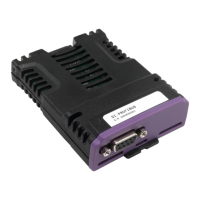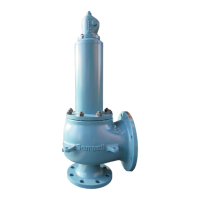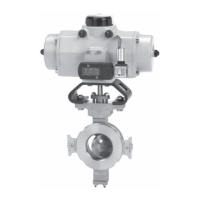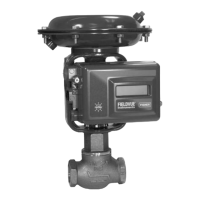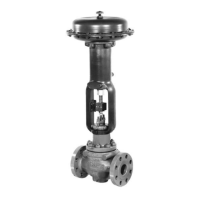Parameter Descriptions www.emersonct.com 85
11 Parameter
Descriptions
This section lists all programmable and feedback
parameters available. The parameters are listed
alphabetically by variable name (shown in italics below the
on screen name) and give a description. Range is dynamic
and depends on User Unit scaling. The units of the
parameters are dynamic and depend on selected User
Units.
Absolute Position Valid
AbsolutePosnValid
This source is activated when either the DefineHome
destination is activated, or any home is successfully
completed (sensor or marker found). This source is
deactivated if the drive is rebooted, an encoder fault
occurs, the drive is powered down, or a home is
re-initiated.
Accelerating
Accelerating
This source is active when the SM-EZMotion module is
executing an acceleration ramp. A normal index consists of
3 segments: Accelerating, At Velocity, and Decelerating.
The Accelerating source will be set (active) during this
acceleration segment regardless of whether the motor is
speeding up or slowing down. Therefore, this source can
sometimes be active when the motor is decelerating. This
could be true when compounding indexes together.
Acceleration Type
AccelType
This parameter is used to select the accel/decel type for all
motion (homes, jogs and indexes). The “S-Curve” ramps
offer the smoothest motion, but lead to higher peak accel/
decel rates. “Linear” ramps have the lowest peak accel/
decel rates but they are the least smooth ramp type. “5/8
S-Curve” ramps and “1/4 S-Curve” ramps use smoothing
at the beginning and end of the ramp but have constant
(linear) accel rates in the middle of their profiles. The “5/8
S-Curve” is less smooth than the “S-Curve” but smoother
than the “1/4 S-Curve”. S-Curve accelerations are very
useful on machines where product slip is a problem. They
are also useful when smooth machine operation is critical.
Linear ramps are useful in applications where low peak
torque is critical. Below is a comparison of the 4 ramp
types:
• S-Curve: Peak Accel = 2 x Average Accel
• 5/8 S-Curve: Peak Accel = 1.4545 x Average Accel
• 1/4 S-Curve: Peak Accel = 1.142857 x Average
Accel
• Linear: Peak Accel = Average Accel
Acceleration Decimal Places
AccelUnits.Decimal
This parameter is the decimal point location for all real-time
accel./decel. ramps.
Acceleration Time Scale
AccelUnits.TimeScale
This parameter is the time units for accel./decel. ramps.
Possible selections are milliseconds or seconds.
At Velocity
AtVel
This source is active when the SM-EZMotion module is
executing a constant velocity motion segment. One
example would be during an index. The source would
activate after the motor has finished accelerating up to
speed and before the motor begins to decelerate to a stop.
A normal index consists of 3 segments: Accelerating, At
Velocity, and Decelerating. This source is active during the
At Velocity segment, and is activated based on the
commanded velocity, not the feedback velocity. During
synchronized motion, AtVel can be active without actual
motor movement.
Bit Number Value
Bit.B#
This read/write bit may be used in a program as an
intermediary variable bit controlled by the user. Bit.B# is
one of 32 bits that make up the BitRegister parameter.
Assigned to communication networks such as DeviceNet,
Profibus and Modbus, Bit.B# may be used to transfer
events that have occurred in a PLC to the SM-EZMotion
program.
Note
When the value of Bit.B# is changed, the value of
BitRegister.#.Value is changed as well.
Bit Register Number Value
BitRegister.#.Value
This parameter is made up of the combination of the 32
Bit.B#. The BitRegister.#.Value. The BitRegister.#.Value
register may be accessed bitwise by using Bit.B#, or
double word-wise by using BitRegister.#.Value.
Bit Register Number Value Mask
BitRegister.#.ValueMask
This parameter is the Mask for the BitRegister.#.Value.
Each bit location is set to either transfer the current data in

